
Journal of Remote Sensing
metrics 2024
Connecting Technology and Environment for Global Impact
Introduction
The Journal of Remote Sensing is a leading scholarly publication dedicated to advancing knowledge and research in the field of remote sensing. Published by the American Association for the Advancement of Science, this open-access journal, which has been available since 2021, strives to provide an inclusive platform for researchers, professionals, and students alike to share transformative findings and innovative techniques related to Earth and planetary sciences, as well as their applications in social sciences and geography. With impressive Scopus rankings, placing it in the 94th percentile for Earth and planetary sciences and the 93rd percentile in geography, the journal is recognized for its high-impact contributions to the field. Researchers can access invaluable content without barriers, ensuring that the latest advancements in remote sensing technology and methodologies are widely disseminated and utilized. By fostering interdisciplinary collaboration and promoting high-caliber research, the Journal of Remote Sensing is becoming an essential resource for anyone interested in the intersection of technology and environmental studies.
Metrics 2024
 -
- 8.80
8.80 9.50
9.50 -
-Metrics History
Rank 2024
IF (Web Of Science)
JCI (Web Of Science)
Quartile History
Similar Journals
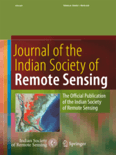
Journal of the Indian Society of Remote Sensing
Pioneering Insights into Remote Sensing TechnologiesJournal of the Indian Society of Remote Sensing, published by SPRINGER, stands as a prominent contribution to the fields of Earth and Planetary Sciences and Geography, Planning and Development. With an ISSN of 0255-660X and an E-ISSN of 0974-3006, this esteemed journal has been in circulation since 1973, showcasing a rich repository of research and advancements in remote sensing applications, methodologies, and technologies, specifically within the Indian context and beyond. The journal's impact is underscored by its placement in the Q2 category of both Earth and Planetary Sciences and Geography as of 2023, ranking impressively in the Scopus database with significant percentiles. With the intent to bridge the gap between theory and practical application, it invites scholars, researchers, and professionals to contribute innovative studies that enhance our understanding of remote sensing and its implications in various domains. The Journal of the Indian Society of Remote Sensing is a vital resource for anyone looking to remain at the forefront of research in this dynamic field.

International Journal of Applied Earth Observation and Geoinformation
Pioneering Solutions for Earth’s Most Pressing Challenges.International Journal of Applied Earth Observation and Geoinformation is a premier peer-reviewed journal published by Elsevier, focusing on the integration and application of earth observation and geoinformation technologies across diverse fields. With an open access model established in 2020, this journal enhances accessibility and dissemination of research crucial for addressing global challenges related to climate change, resource management, and sustainable development. The journal occupies a notable position within the academic community, featuring a Q1 ranking in multiple categories including Computers in Earth Sciences, Earth-Surface Processes, and Global and Planetary Change, reflecting its significant impact and relevance in these disciplines. It is recognized for its high-quality articles that explore innovative methodologies and applications, making it an essential resource for researchers, practitioners, and students alike who seek to advance their understanding of earth dynamics and geospatial technology. The journal is indexed in Scopus with impressive rankings that underscore its high citation impact and scholarly influence, with an emphasis on providing a platform for the latest findings in management, monitoring, and policy in environmental science.
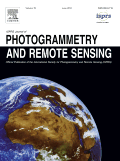
ISPRS JOURNAL OF PHOTOGRAMMETRY AND REMOTE SENSING
Elevating Knowledge in Photogrammetry and Remote SensingISPRS Journal of Photogrammetry and Remote Sensing is a prestigious publication at the forefront of the fields of photogrammetry and remote sensing. Established in 1989 and published by Elsevier, this journal has consistently maintained a strong academic standing, currently holding a top-tier Q1 ranking across multiple categories, including Atomic and Molecular Physics, Computer Science Applications, and Engineering. This reflects its vital contribution to advancing knowledge and technology in these dynamic fields. The journal is not only a vital resource for researchers and professionals but also serves as an essential academic platform for students keen on delving into the latest developments in geospatial sciences. The journal operates under a non-open access model, ensuring that submitted research adheres to the highest standards of scholarly communication and integrity. With an impactful focus, it brings innovative research, comprehensive reviews, and significant case studies to a global audience. The ISPRS Journal is crucial for those aiming to enhance their understanding and application of remote sensing techniques within various scientific disciplines.

Geographia Technica
Advancing Knowledge in Earth Sciences and PlanningGeographia Technica is an esteemed academic journal published by GEOGRAPHIA TECHNICA ASSOCIATION - GT Assoc in Romania, serving as a vital platform for the dissemination of cutting-edge research in the interdisciplinary fields of geography, planning, and earth sciences. Since its inception in 2009 and continuing through to 2024, the journal has established itself as a respected source of knowledge, reflected in its classification within the Q3 category across significant fields such as Computers in Earth Sciences, Earth-Surface Processes, and Geography, Planning and Development. With the ambition to enhance the understanding of socio-environmental interactions and technological applications in these areas, Geographia Technica invites scholars and practitioners to contribute original research that pushes the boundaries of current knowledge. Although currently not listed as open access, the journal's engaging content ensures it remains a valuable resource for researchers, professionals, and students keen on advancing their expertise in these dynamic disciplines.
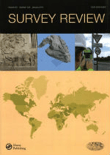
SURVEY REVIEW
Pioneering Scholarly Communication Since 1963SURVEY REVIEW is a distinguished journal published by Taylor & Francis Ltd, focusing on a diverse range of disciplines including Civil and Structural Engineering, Computers in Earth Sciences, and Earth and Planetary Sciences. With an ISSN of 0039-6265 and an E-ISSN of 1752-2706, this journal has been a vital resource for scholarly communication since its inception in 1963. Positioned within the Q2 and Q3 quartile categories according to the latest rankings, it is recognized for its significant contributions to advancing knowledge in multiple fields, specifically holding a rank of 64/159 in Earth and Planetary Sciences and 32/73 in Computers in Earth Sciences. Researchers, professionals, and students benefit from its critical insights into complex engineering and scientific challenges. Although SURVEY REVIEW is not open access, it remains a highly cited journal, making it an essential avenue for disseminating pivotal findings that impact both academia and industry practices.
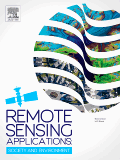
Remote Sensing Applications-Society and Environment
Advancing knowledge at the intersection of society and environment.Remote Sensing Applications-Society and Environment, published by Elsevier, stands at the forefront of interdisciplinary research, bridging the fields of remote sensing and environmental science. With an impressive impact factor and recognition within the Q1 quartile in both Computers in Earth Sciences and Geography, Planning and Development, the journal is a vital resource for researchers, professionals, and students committed to advancing our understanding of environmental dynamics through innovative remote sensing technologies. Since its inception in 2015, this journal has cultivated a rich repository of knowledge, addressing pertinent societal and environmental issues, making it a leading source for transformative applications in the field. Accessible and relevant, articles published here not only explore theoretical advancements but also practical implications, ensuring research findings are effectively disseminated to stimulate further inquiries and applications in sustainability and ecological stewardship. The journal's strong Scopus rankings, particularly within its categories, solidify its role as an essential platform for scholarly exchange.
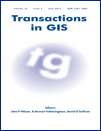
Transactions in GIS
Pioneering the Future of Geographic Research and AnalysisTransactions in GIS is a premier academic journal published by WILEY, dedicated to advancing the field of Geographic Information Science (GIS). With an ISSN of 1361-1682 and an E-ISSN of 1467-9671, this journal has continually contributed valuable insights since its inception in 1996, transforming the landscape of GIS research and application. Covering a broad scope within Earth and Planetary Sciences, it holds a notable Q2 ranking and stands in the 74th percentile among its peers as per Scopus rankings. The journal serves as a critical platform for researchers, professionals, and students who seek to disseminate and engage with innovative GIS methodologies, applications, and theoretical advancements. With a commitment to quality and rigor, Transactions in GIS remains a vital resource for those at the forefront of geographic research and analysis.

Boletim de Ciencias Geodesicas
Connecting Researchers with Groundbreaking Geodetic InsightsBoletim de Ciências Geodésicas is an esteemed academic journal published by the Universidade Federal do Paraná within its Centro Politécnico. Focused on the dynamic field of Earth and Planetary Sciences, this Open Access journal has been a pivotal resource since 1997, fostering the dissemination of critical research and innovative methodologies. With an impact factor indicative of its relevance in the discipline, Boletim de Ciências Geodésicas ranks in the Q3 quartile for Earth and Planetary Sciences as of 2023, showcasing its commitment to quality scholarship in a competitive field. Researchers and students alike will benefit from access to cutting-edge findings, given its broad scope that encompasses various aspects of geodesy and related sciences. The journal's convergence of research from 2005 to 2024 ensures that it remains at the forefront of emerging trends and fundamental developments in the discipline, further enhancing its esteemed reputation in the academic community.

Advances in Geodesy and Geoinformation
Innovating the Landscape of Earth SciencesAdvances in Geodesy and Geoinformation is a pioneering journal published by the Polish Academy of Sciences, dedicated to the dynamic fields of geodesy and geoinformation. With an ISSN of 2720-7242 and an E-ISSN of 2720-7242, it offers an open-access platform since 2022, making cutting-edge research readily accessible to a global audience. The journal aims to foster the dissemination of innovative methodologies, technologies, and applications in the realms of geospatial data and earth sciences. Researchers, professionals, and students alike can benefit from the high-quality articles that contribute to advancing knowledge in this critical area, bridging theoretical insights and practical solutions. Situated in the heart of Poland, at PL Defilad 1, Warszawa, the journal not only reflects the nation's academic rigor but also positions itself as a crucial hub for international collaboration and knowledge exchange in geodesy and geoinformation.
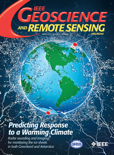
IEEE Geoscience and Remote Sensing Magazine
Connecting Professionals with Groundbreaking DiscoveriesIEEE Geoscience and Remote Sensing Magazine, published by the esteemed IEEE-Institute of Electrical and Electronics Engineers Inc, serves as a pivotal platform for cutting-edge research in the realms of geoscience, remote sensing, and related disciplines. With an ISSN of 2473-2397 and E-ISSN of 2168-6831, this prestigious magazine has established itself as a leading resource in its field, achieving a Q1 ranking across multiple categories including Computer Science, Earth and Planetary Sciences, and Electrical and Electronic Engineering. Researchers will appreciate its high impact, recognized by impressive Scopus rankings—2nd in Physics and Astronomy, 3rd in Earth Sciences, and 7th in General Computer Science, placing it firmly in the top percentiles globally. Published bimonthly and compatible with various access options, the magazine aims to disseminate innovative solutions and technological advancements, fostering collaboration and knowledge-sharing among professionals, students, and industry stakeholders. As it converges its contributions from 2013 to 2024, IEEE Geoscience and Remote Sensing Magazine continues to significantly influence the scientific community's understanding of the planet and its systems.